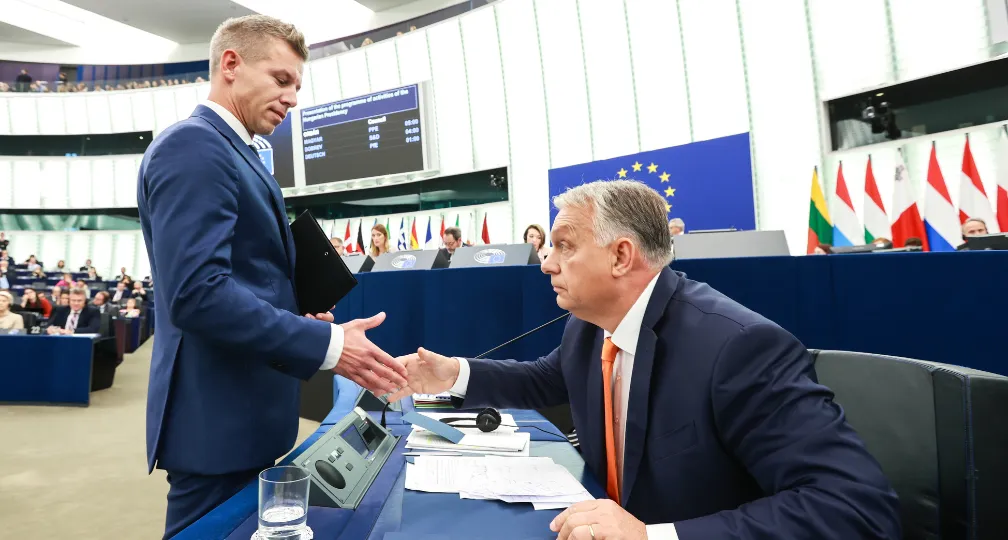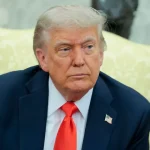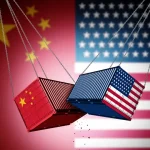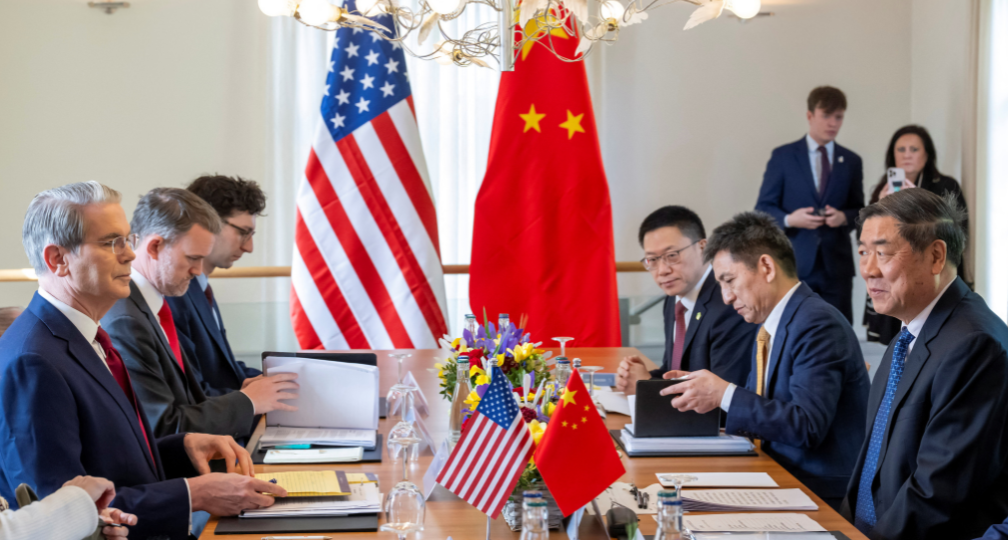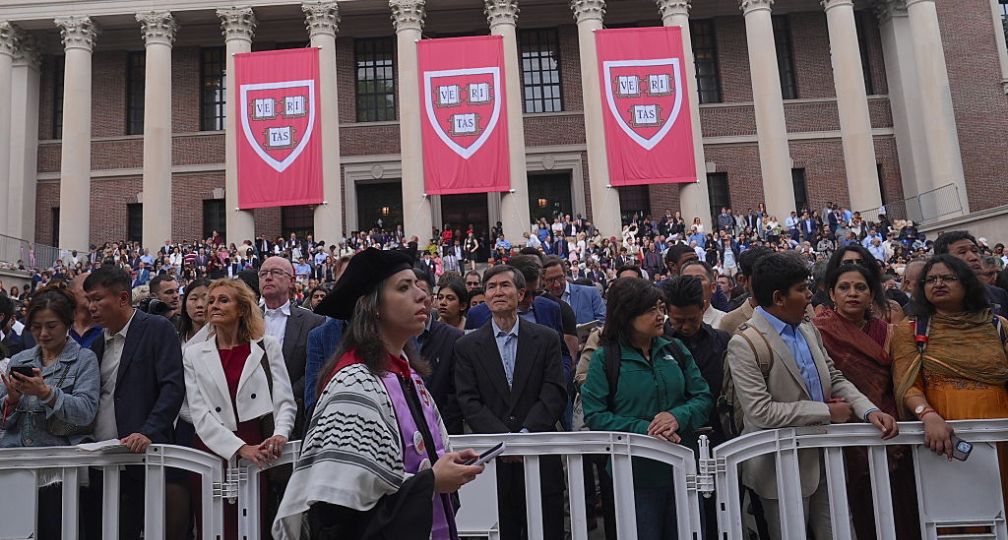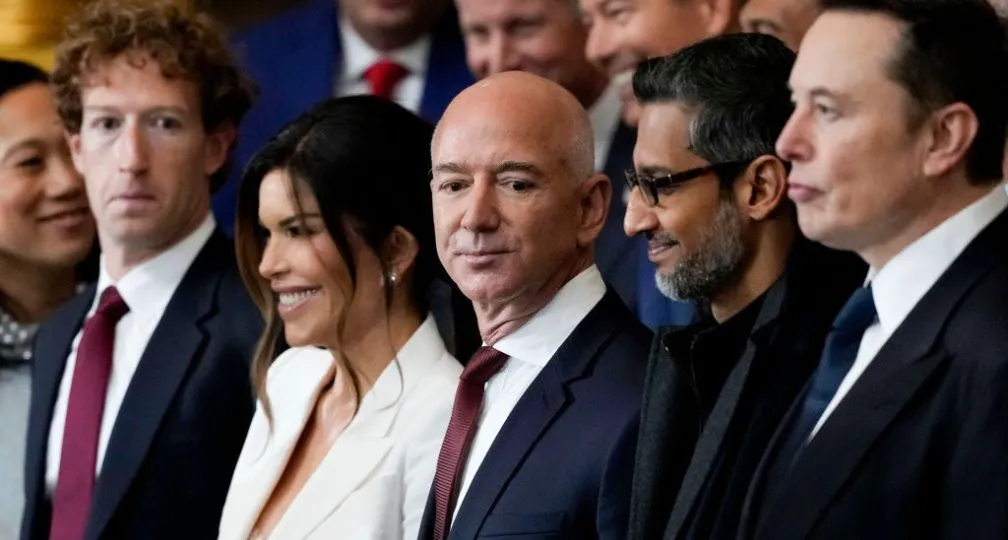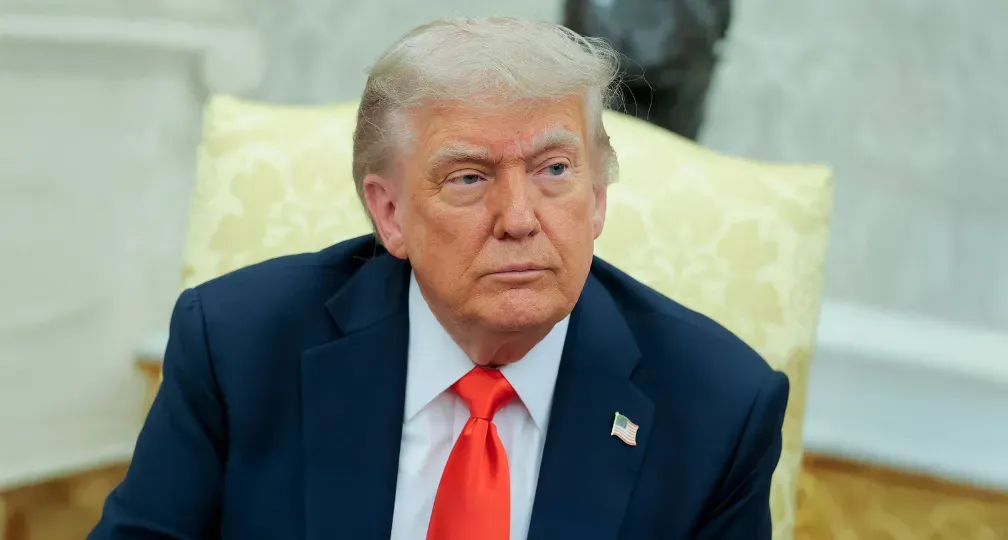From dollar hegemony to currency multipolarity?
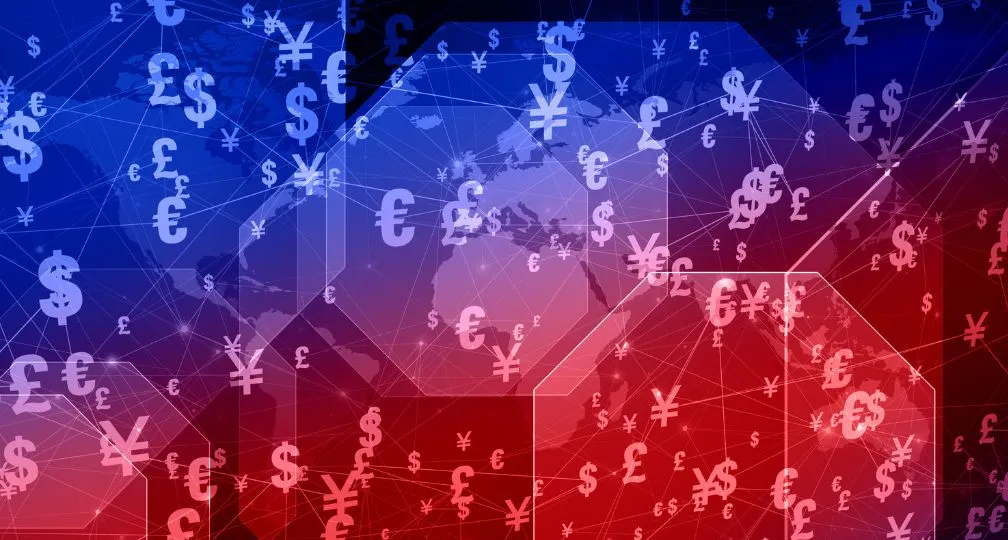
The latest regulatory developments on economic security & geoeconomics
By Paul Nadeau, Visiting Research Fellow, Institute of Geoeconomics (IOG)
Trump Approves Nippon Steel Acquisition of U.S. Steel: Donald Trump issued an executive order on June 13 that allows Nippon Steel’s acquisition of U.S. Steel to move ahead, ending an 18-month long ordeal that began when Nippon Steel first announced the proposed acquisition of U.S. Steel in December 2023. The deal advanced once both companies signed an agreement to mitigate national security risks that also commits Nippon Steel to make $11 billion in new investments in U.S. Steel by 2028 which includes investment in a greenfield project. The agreement also gives the U.S. government a noneconomic “golden share” in U.S. Steel which gives the U.S. government a veto over any move that would change the name and headquarters location of U.S. Steel, transfer jobs or reduce production outside of the United States, close or idle existing plants, or reduce promised investments. The merger would create the world’s second largest steel company after China Baowu Group.
China Relaxes Some Controls on U.S. Firms Following Talks: On June 11, Donald Trump announced on Truth Social that a deal had been reached whereby China would supply rare earths and magnets to the United States in exchange for the ability of Chinese students to access U.S. universities. The post followed two days of negotiations between China and the United States to resolve outstanding issues in the May “trade truce”. Following the talks in London, China promised to fast-track approval of rare-earth export applications from nonmilitary U.S. manufacturers, providing licenses a six-month term. China also offered to set up a “green channel” for expediting license approvals from approved U.S. firms. However, China has not moved on releasing rare earths with military applications which also needed by automakers and other manufacturers.
Steel & Aluminum Tariffs Expanded to Consumer Products: The U.S. Commerce Department announced that the 50 percent tariffs on steel and aluminum imports due to national security concerns under Section 232 of the Trade Expansion Act of 1960 will be expanded from raw steel to include consumer products containing steel and aluminum such as dishwashers, driers, and washing machines. Experts believe that the broader list of goods under Section 232 provisions represents an attempt by Trump to expand his tariff regime while his April 2 “reciprocal” tariff program faces legal challenges, essentially replacing a country-by-country approach with a sector-by-sector approach that relies on more established tariff authorities.
New Sanctions Target Russia’s Shadow Fleet: The United Kingdom announced a new sanctions package for Russia at the G7 summit in Canada. The new sanctions target 30 entities across Russia’s financial, military, and energy sectors, specifically 20 tanks of Russia’s “shadow fleet” and Orion Star Group LLC and Valegro LLC-FZ, for their role in crewing and managing shadow fleet vessels, as well as the agency leading the development of Russia’s underwater intelligence gathering operations. Canada announced a package of sanctions targeting Russia’s shadow fleet, listing 77 individuals, 39 entities, and 201 vessels, applying trade restrictions to almost 1,000 new items, while Australia listed 60 vessels for connections to the shadow fleet.
OFAC Fines Capital Firm for Sanctions Evasion: The U.S. Treasury Department’s Office of Foreign Assets Control (OFAC) fined Global Venture Alliance (GVA) Capital for or violating U.S. sanctions by managing investments for a Russian oligarch despite knowing that he was on OFAC’s blocked persons list. OFAC also said that GVA Capital also failed to comply with a subpoena by not producing the full amount of documentation requested by the agency for 28 months.
Analysis: From dollar hegemony to currency multipolarity?
By Andrew Capistrano, Visiting Research Fellow, Institute of Geoeconomics (IOG)
In the wake of President Trump’s disruptive tariff policies, heightened concerns have been raised about the stability of dollar-denominated assets, generating greater interest in a more diversified international monetary order. A measured retreat from dollar reserves over the past decade had already prompted speculation about “de-dollarization”, but now—as US fiscal risks increase, trade weaponization spreads, and global investors eye alternatives—dollar hegemony is being openly questioned from Beijing to Brussels.
On 18 June, at a major financial forum in Shanghai, People’s Bank of China (PBOC) Governor Pan Gongsheng delivered a landmark speech calling for a “multipolar” global monetary system, in which greater prominence would be given to major rival currencies including the euro and renminbi (RMB). Pan’s vision was rooted in geopolitics and digital innovation: more international use of a “digital RMB”, fewer dependencies on the dollar, and enhanced monetary resilience via a regionalized, diversified currency architecture. He even proposed reforming the IMF’s Special Drawing Rights (SDRs) as a pathway to turn the basket of currencies into a new kind of “supranational money”.
This is an ambitious vision. Yet for all the rhetoric about currency multipolarity, the world does not appear to be heading toward a clean break from the dollar as the global reserve currency, but instead toward a messier, more complex monetary order.
China’s push to internationalize the RMB is not new, but geopolitical realignments, financial fragmentation, and the rise of digital finance have accelerated its urgency. Pan’s recent remarks emphasized the risks of overreliance on a single sovereign currency and the vulnerability of the existing cross-border payment infrastructure, which he said can be “politicized and weaponized” through unilateral sanctions. To mitigate these risks, the PBOC has expanded its Cross-border Interbank Payment System (CIPS), signed record currency swap lines with other central banks (up to RMB 4.3 trillion by February 2025), and boosted RMB-denominated commodity trade—especially with countries under Western sanctions like Russia.
However, China’s ambitions are constrained by its own policy contradictions. Crucially, a stronger RMB would aid internationalization but make exports more expensive, damaging its core growth engine. China’s closed capital account further limits RMB convertibility and usability, making it far less practical than the dollar or even the euro for trade and reserves. Despite a brief boost from RMB oil settlement with Russia, the currency still comprises just 4.6% of global payments, far behind the dollar (47.6%), the euro (22.9%), and even the British pound (7.1%).
Pan seems to recognize these structural limits. While critical of dollar hegemony, for now he stops short of positioning the RMB as its successor. Instead, he advocates for a multipolar system built around a small number of strong sovereign currencies and enhanced SDRs, which—at least in theory—would reduce global monetary imbalances by spreading the burdens and responsibilities of reserve currency provision.
Importantly, China is not alone in questioning the benefits of dollar hegemony. On 17 June, one day before Pan’s speech, ECB President Christine Lagarde published an op-ed arguing that the “global euro moment” had arrived. Citing rising protectionism and declining trust in multilateralism, she claimed that dollar dominance is “no longer certain”.
But Lagarde was also candid about the euro’s deficiencies. To gain global traction for the currency, she said Europe needed to demonstrate it could meet three basic trust-building conditions: geopolitical credibility, economic resilience, and institutional reform. That means more joint fiscal capacity, deeper capital markets, and additional safe euro-denominated assets—especially through defense spending and green investment. Lagarde even called for majority voting within the EU (rather than the single-nation veto) to overcome political gridlock. IMF Managing Director Kristalina Georgieva echoed Lagarde’s sentiments days later, arguing the euro’s prospects would improve if the EU offered a unified, dynamic investment environment. Yet the gulf between aspiration and implementation is wide. It would be an understatement to say these reforms are easier said than done.
Thus until Europe resolves its structural fragmentation, the euro is unlikely to mount a serious challenge to the dollar. Indeed, the euro’s 20% share of global foreign exchange reserves has been remarkably stable since 2000, roughly the same as the collective share held by the various European currencies it replaced. And SWIFT data indicates that the euro’s share of global payments declined from just under 40% in 2023 to around 20% today, while the dollar’s share increased from 40% to around 50%. One could even argue that rather than “de-dollarization”, there has been a deeper trend toward “de-euroization”.
Pan and Lagarde nevertheless raise important questions about the risks of dollar hegemony. But fundamentally, the feasibility of either the euro or the RMB replacing the dollar as the global reserve currency is undercut by three constraints.
First, the main reason why “de-dollarization” has gained traction is because the US has shown a willingness to weaponize its currency to achieve geopolitical ends. The most obvious example is the Biden administration’s freezing of Russia’s $300 billion in foreign exchange reserves after the invasion of Ukraine; and in the Trump administration’s drive to reduce persistent US trade deficits, future weaponization of the US capital account cannot be discounted. But China and the EU have also enthusiastically used economic tools to advance their geopolitical interests. As Pan even pointed out, the problem with a sovereign currency provider is that it will naturally prioritize its national interests over the provision of “global public goods”. If anything, the influence of geopolitics on economic policy will only increase, making it unlikely that another currency can gain the global trust needed to dethrone dollar hegemony.
Second, the dollar became hegemonic not simply because of US military or institutional strength, but because of its unmatched ability to absorb global savings through its capital account surplus. It is precisely because the US has run trade deficits for decades that the dollar’s dominance has proven so intractable.
For China to meaningfully replace the dollar, it would need to run current account deficits or allow massive foreign capital inflows. Neither is politically or economically viable. In other words, while China wants to run large trade surpluses while parking its excess savings in safe, liquid assets, this strategy requires another large and stable economy willing to absorb its surpluses. Similarly, the EU’s economic model is also reliant on trade surpluses absorbed by the US, and there are no indications that it plans to reverse course. In short, RMB or euro internationalization will be constrained by both economies’ growth models.
Third, although central bankers at the PBOC or ECB may have global ambitions, the market reaction to Trump’s economic disruption suggests there is little demand for a new reserve currency. In fact, the most notable shift away from the dollar has not been toward the RMB or the euro—it has been toward gold.
Amid dollar volatility and trade uncertainty, gold offers political neutrality with a historical precedent. Between 1980 and 2010, gold’s share of global reserves shrank from 60% to just over 10%, while the dollar’s expanded from around 30% to 60%. But gold rebounded after the financial crisis, further spiking after Trump’s tariff disruption, and now comprises 20% of global reserves. It has actually overtaken the euro as the second most widely held reserve asset.
This is not to say that the challenges facing the RMB or euro mean dollar hegemony is assured. While the structural basis for dollar dominance has not eroded so much that it could be seriously challenged for reserve currency status, the trend toward functional monetary multipolarity may be inescapable. Regional currency alternatives are growing even though the dollar retains its global role. If the US imposes more tariffs, restricts dollar access, or experiences financial turmoil, diversification will accelerate. But this diversification will be tactical, not systemic.
Moreover, uncertainty surrounding US fiscal and economic policy may be making the world forget the dollar system’s unprecedented convenience and stability. Dollar hegemony underpins a global financial system where capital can move relatively freely across borders, and the former may be a necessary condition for the latter. In a world with both capital mobility and two or three major competing currencies, there would be more arbitrage opportunities and monetary volatility. A more stable form of currency multipolarity may actually require capital controls, regional payment blocs, or commodity-based settlements—mechanisms that enhance policy sovereignty and reduce systemic risk at the cost of globalized financial efficiency.
A new monetary order may be emerging—but not one that displaces the dollar with the RMB or euro. Rather, it seems we are moving toward a world where the dollar remains “first among equals”, with growing hedges, alternatives, and frictions at the margins. In this transitional world, power lies not in immediately replacing the dollar, but in shaping the institutions, technologies, and capital flows that define what comes next.
The global monetary future may indeed be multipolar. But there is no guarantee the transition will be orderly.
(Photo Credit: istock)
Disclaimer: The views expressed in this IOG Economic Intelligence Report do not necessarily reflect those of the API, the Institute of Geoeconomics (IOG) or any other organizations to which the author belongs.
API/IOG English Newsletter
Edited by Paul Nadeau, the newsletter will monthly keep up to date on geoeconomic agenda, IOG Intelligencce report, geoeconomics briefings, IOG geoeconomic insights, new publications, events, research activities, media coverage, and more.



Visiting Research Fellow
Andrew Capistrano is Director of Research at PTB Global Advisors, a Washington DC-based geopolitical risk consulting firm. Specializing in economic competition between the US/EU and China, he analyzes how trade, national security, and industrial policies impact markets, and his firm’s clients include Japanese corporations and government agencies. He previously worked in Tokyo at the US Embassy’s American Center Japan and as a research associate at the Rebuild Japan Initiative Foundation / Asia-Pacific Initiative. Dr Capistrano holds a BA from the University of California, Berkeley; an MA in political science (international relations and political economy) from Waseda University; and a PhD in international history from the London School of Economics. His academic work focuses on the diplomatic history of East Asia from the mid-19th to the mid-20th centuries, applying game-theoretic concepts to show how China's economic treaties with the foreign powers created unique bargaining dynamics and cooperation problems. During his doctoral studies he was a research student affiliate at the Suntory and Toyota International Centres for Economics and Related Disciplines (STICERD) in London.
View Profile
Visiting Research Fellow
Paul Nadeau is an adjunct assistant professor at Temple University's Japan campus, co-founder & editor of Tokyo Review, and an adjunct fellow with the Scholl Chair in International Business at the Center for Strategic and International Studies (CSIS). He was previously a private secretary with the Japanese Diet and as a member of the foreign affairs and trade staff of Senator Olympia Snowe. He holds a B.A. from the George Washington University, an M.A. in law and diplomacy from the Fletcher School at Tufts University, and a PhD from the University of Tokyo's Graduate School of Public Policy. His research focuses on the intersection of domestic and international politics, with specific focuses on political partisanship and international trade policy. His commentary has appeared on BBC News, New York Times, Nikkei Asian Review, Japan Times, and more.
View Profile-
 The Geoeconomics of Generative AI Development Race: How Emerging Technologies Can Become National Power2025.10.27
The Geoeconomics of Generative AI Development Race: How Emerging Technologies Can Become National Power2025.10.27 -
 From Decline to Surge: The Defense Industry in the Era of Excess Demand (Executive Summary)2025.10.24
From Decline to Surge: The Defense Industry in the Era of Excess Demand (Executive Summary)2025.10.24 -
 Hungary’s Electoral System: Constructing a System Favorable to the Governing Party and Its Future Prospects2025.10.20
Hungary’s Electoral System: Constructing a System Favorable to the Governing Party and Its Future Prospects2025.10.20 -
 US-China Misperceptions in the Race for Strategic Autonomy2025.10.17
US-China Misperceptions in the Race for Strategic Autonomy2025.10.17 -
 Navigating Uncertainty: India’s Quiet Strategic Moves2025.10.15
Navigating Uncertainty: India’s Quiet Strategic Moves2025.10.15
 What Comes Next after the Supreme Court Rules on IEEPA?2025.10.02
What Comes Next after the Supreme Court Rules on IEEPA?2025.10.02 Trump and America’s tech giants: Coexistence or collaboration?2025.10.03
Trump and America’s tech giants: Coexistence or collaboration?2025.10.03 Event Report: Nuclear Weapons, Eighty Years After the War and the Atomic Bombings2025.09.25
Event Report: Nuclear Weapons, Eighty Years After the War and the Atomic Bombings2025.09.25 A Looming Crisis in U.S. Science and Technology: The Case of NASA’s Science Budget2025.10.08
A Looming Crisis in U.S. Science and Technology: The Case of NASA’s Science Budget2025.10.08 US-China Misperceptions in the Race for Strategic Autonomy2025.10.17
US-China Misperceptions in the Race for Strategic Autonomy2025.10.17




